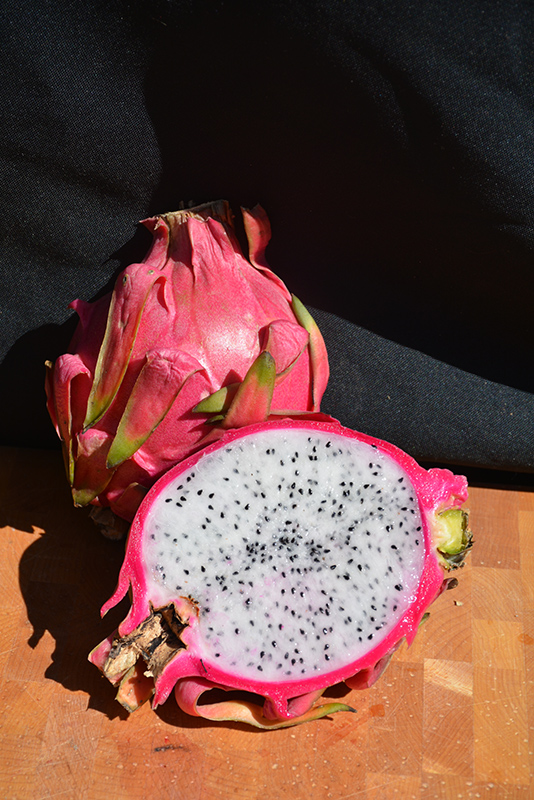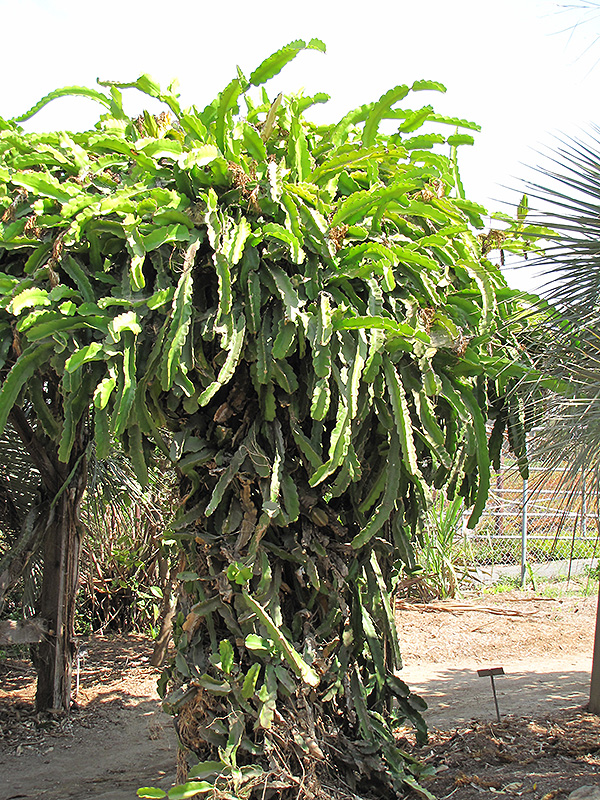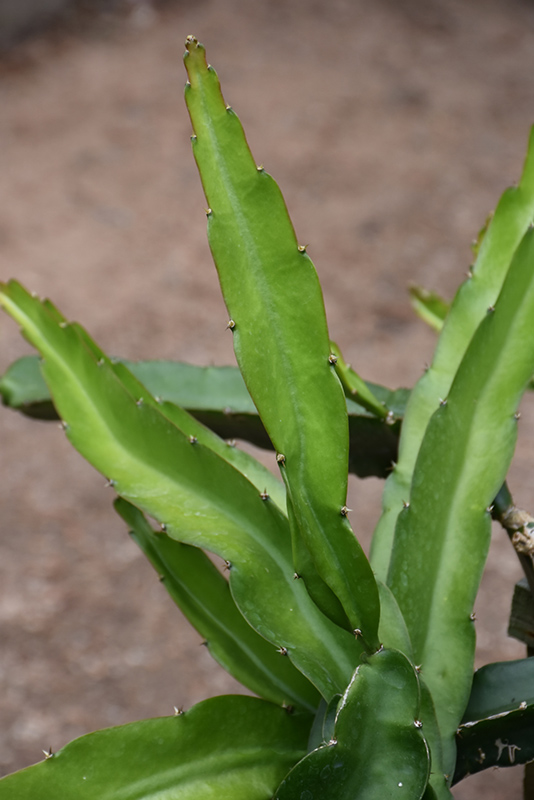Height: 10 feet Spread: 10 feet
Sunlight:
Other Names: syn. Cereus undatus, Hylocereus tricostatus Description: An exotic cactus with creeping, sprawling , or climbing stems that are spiny, and will branch profusely; scented, nocturnal white and green flowers appear in late spring, followed later by delicious, sweet red fruit; an amazing accent or container plant Features & Attributes Dragon Fruit features showy fragrant white cup-shaped flowers with buttery yellow eyes and green bracts along the branches from late spring to early summer. The flowers are excellent for cutting. Its attractive succulent narrow leaves remain green in color throughout the year. The red oblong fruit is edible and has a sweet taste and a fleshy texture. Note that in general, it can be difficult to get plants to reliably produce fruit indoors; this may be a challenge best reserved for adventurous and experienced gardeners. The green stems are very effective and add to the plant's interest. This is a multi-stemmed evergreen houseplant with an upright spreading habit of growth. Its relatively coarse texture stands it apart from other indoor plants with finer foliage. This plant can be pruned at any time to keep it looking its best. Planting & Growing When grown indoors, Dragon Fruit can be expected to grow to be about 10 feet tall at maturity, with a spread of 10 feet. It grows at a medium rate, and under ideal conditions can be expected to live for approximately 60 years. This houseplant requires direct sun for optimal performance, and should therefore be situated in a room that gets bright sunlight for a good part of the day; it is not a good choice for rooms lit only by artificial light. It is very adaptable to both dry and moist soil, but will not tolerate any standing water. The surface of the soil shouldn't be allowed to dry out completely, and so you should expect to water this plant once and possibly even twice each week. Be aware that your particular watering schedule may vary depending on its location in the room, the pot size, plant size and other conditions; if in doubt, ask one of our experts in the store for advice. It is not particular as to soil type or pH; an average potting soil should work just fine. There are many factors that will affect the ultimate height, spread and overall performance of a plant when grown indoors; among them, the size of the pot it's growing in, the amount of light it receives, watering frequency, the pruning regimen and repotting schedule. Use the information described here as a guideline only; individual performance can and will vary. Please contact the store to speak with one of our experts if you are interested in further details concerning recommendations on pot size, watering, pruning, repotting, etc. -- THIS IS A HOUSEPLANT AND IS NOT MEANT TO SURVIVE THE WINTER OUTDOORS IN OUR CLIMATE --![]()
![]()
![]()
![]()
![]()
![]()
![]()
![]()
![]()
![]()
![]()
![]()
![]()
![]()
Characteristics
Applications
Ornamental Features
This guide is an online resource representing many of the varieties that we carry over the course of the season, and is intended for informational purposes only. Inventory varies seasonally, so we cannot guarantee that every plant will be in stock at all times - please contact the store directly for current availability. It does not include our entire selection of plants, so be sure to visit our store to see varieties that may not be represented on this list.




